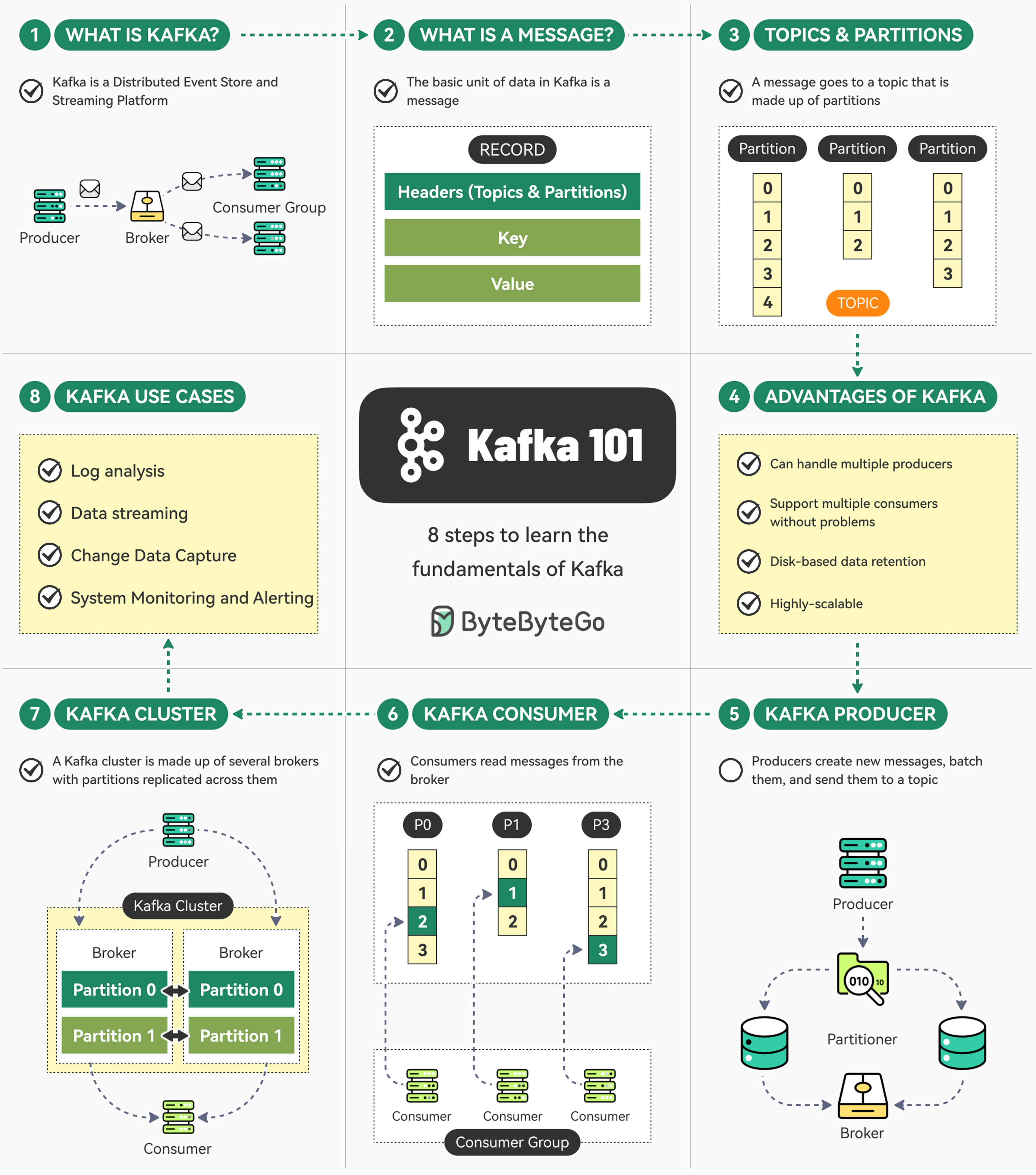Learn the fundamentals of Kafka in 8 simple steps.

Kafka is super-popular but can be overwhelming in the beginning.
Here are 8 simple steps that can help you understand the fundamentals of Kafka.
Kafka is a distributed event store and a streaming platform. It began as an internal project at LinkedIn and now powers some of the largest data pipelines in the world in orgs like Netflix, Uber, etc.
Message is the basic unit of data in Kafka. It’s like a record in a table consisting of headers, key, and value.
Every message goes to a particular Topic. Think of the topic as a folder on your computer. Topics also have multiple partitions.
Kafka can handle multiple producers and consumers, while providing disk-based data retention and high scalability.
Producers in Kafka create new messages, batch them, and send them to a Kafka topic. They also take care of balancing messages across different partitions.
Kafka consumers work together as a consumer group to read messages from the broker.
A Kafka cluster consists of several brokers where each partition is replicated across multiple brokers to ensure high availability and redundancy.
Kafka can be used for log analysis, data streaming, change data capture, and system monitoring.